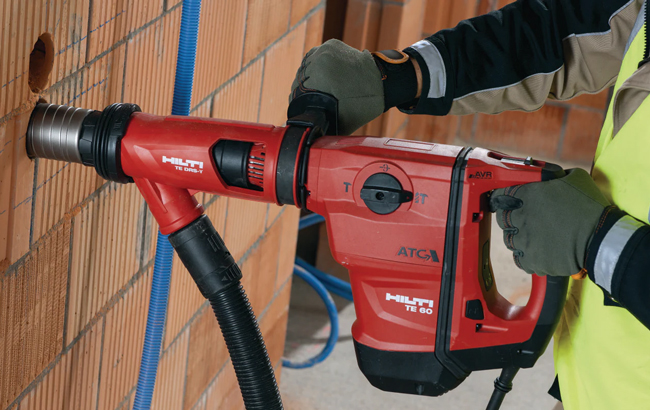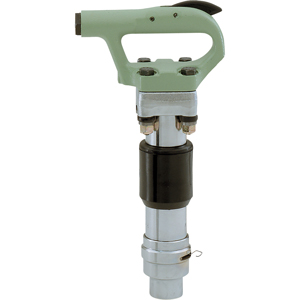Chipping hammers are hand-held power tools that are used to chip away at or break up concrete. They are powerful and maneuverable, and they can be powered by electricity, pneumatics, or hydraulics. Each power source has advantages and disadvantages. Pneumatic chipping hammers, for example, are typically utilized in settings where there is excess moisture. Hydraulic hammers are commonly employed for larger, more difficult work.
Chipping hammers employ bits or chisels, as well as vibration, to chip away undesirable concrete quickly and cleanly. Most typically associated with concrete demolition, these hammers can also be used to break up ceramic tile and remove grout when correctly used and equipped with the appropriate bits or chisels.
Chipping hammers’ efficiency is usually influenced by their weight. The most powerful models, those weighing over 25 pounds, can produce approximately 3000 blows per minute (BPM), while the lightest models only give 900 to 950 BPM. Commercial hammers typically weigh between 9 and 30 pounds. There are, however, some types made for do-it-yourselfers that weigh less than six pounds and resemble electric drills or air wrenches. The tiny size of today’s powered hammer permits it to be utilized in places where a wet saw would be inefficient or too bulky, and where a sledge hammer would cause significant additional damage. The chipping hammer’s smaller weight and portability allow it to be used to chip vertical and above surfaces with ease.
The operator must read and follow all operating instructions for the specific hammer being used in order to operate the tools safely and effectively. Heavy gloves, long sleeves, long pants, and, most importantly, safety glasses or goggles should be worn by the operator. Before starting the project, the operator should oil the bit, install the right bit or chisel according to the job specifications, and clean the tool afterward.
The rear, pistol-grip handle of the hand-held chipping hammer is controlled with one hand while the barrel or shaft is controlled with the other. Vibration is reduced and maneuverability is maintained in this way. Some heavier hammers now have a detachable second handle that can be inserted into the shaft for improved tool control. Many manufacturers now include rotating, shock-absorbing grips to reduce vibration and heat shields to protect the operator from excessive friction heat created by the hammer heating up during usage.








